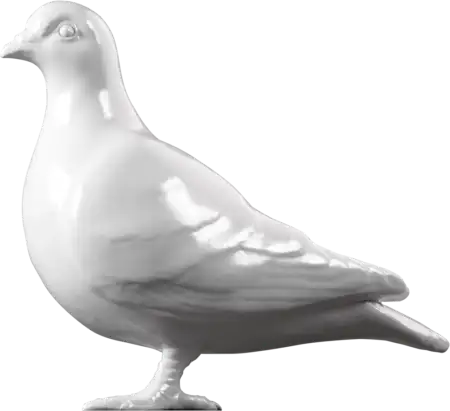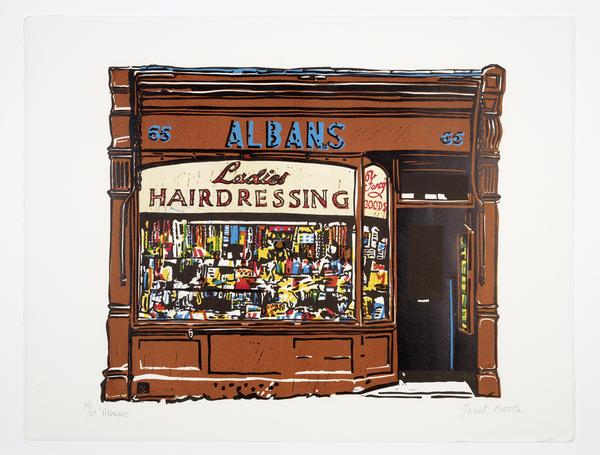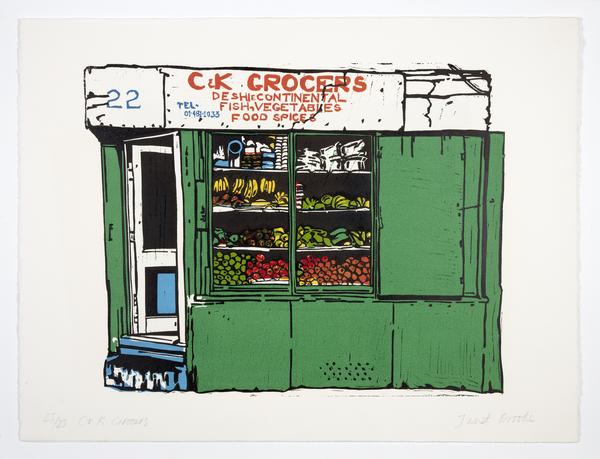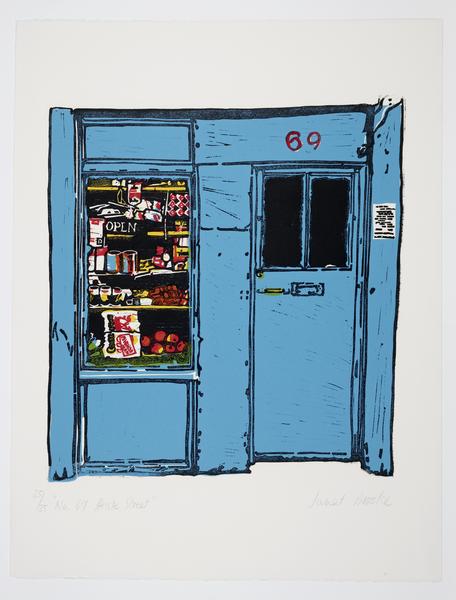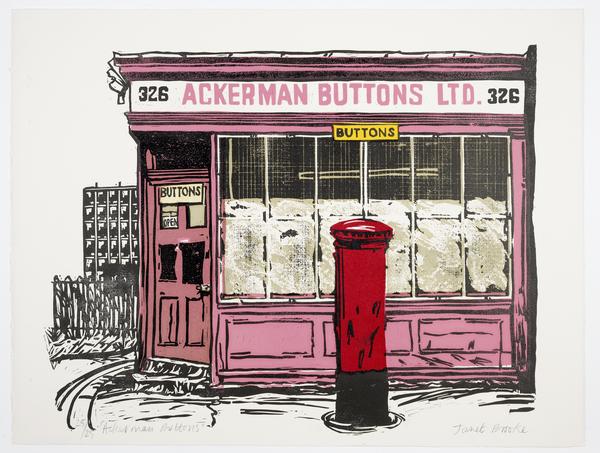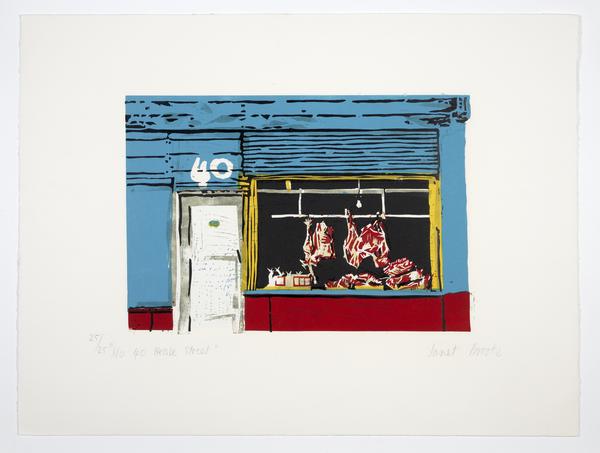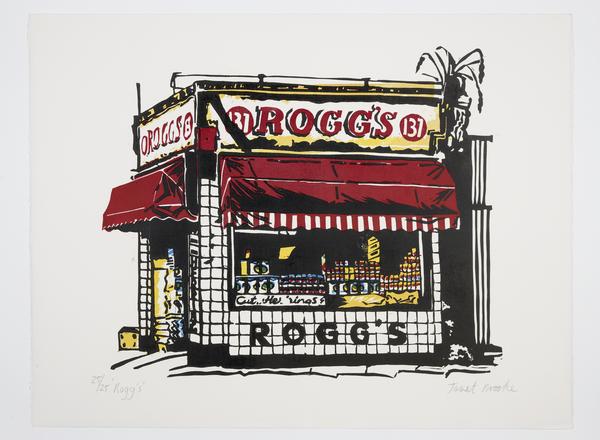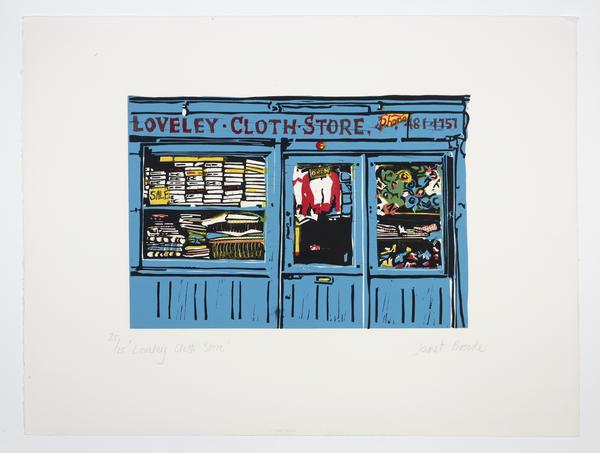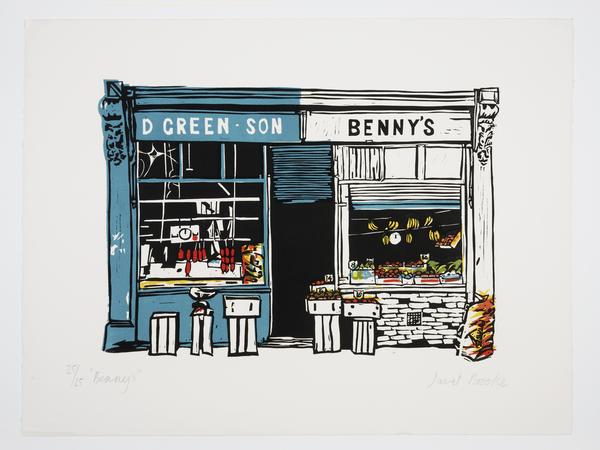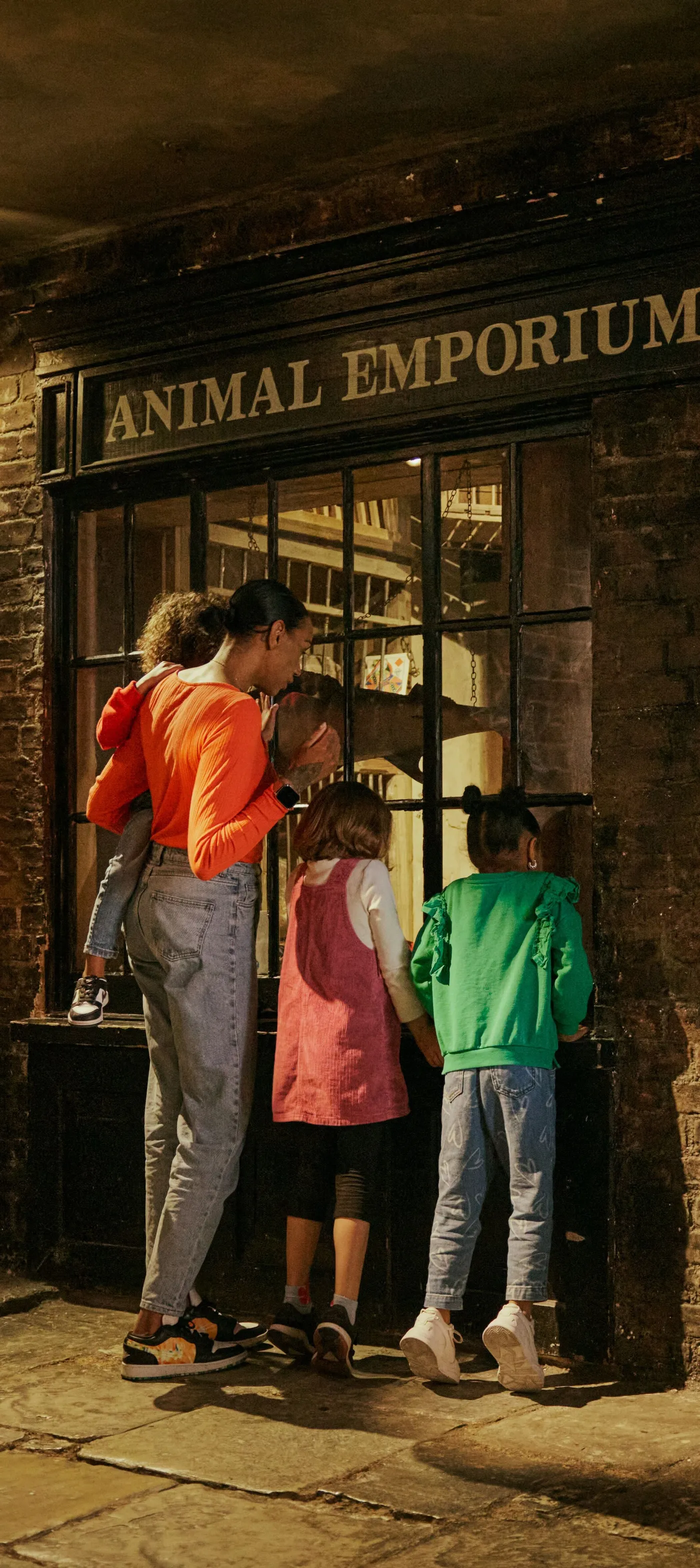Colourful prints of lost East End shops
In the 1980s, artist Janet Brooke found inspiration in the independent shops and trades of her east London neighbourhood. Her charmingly detailed linocut prints record many long-standing, family-run businesses that have since disappeared.
Hackney & Tower Hamlets
1980s
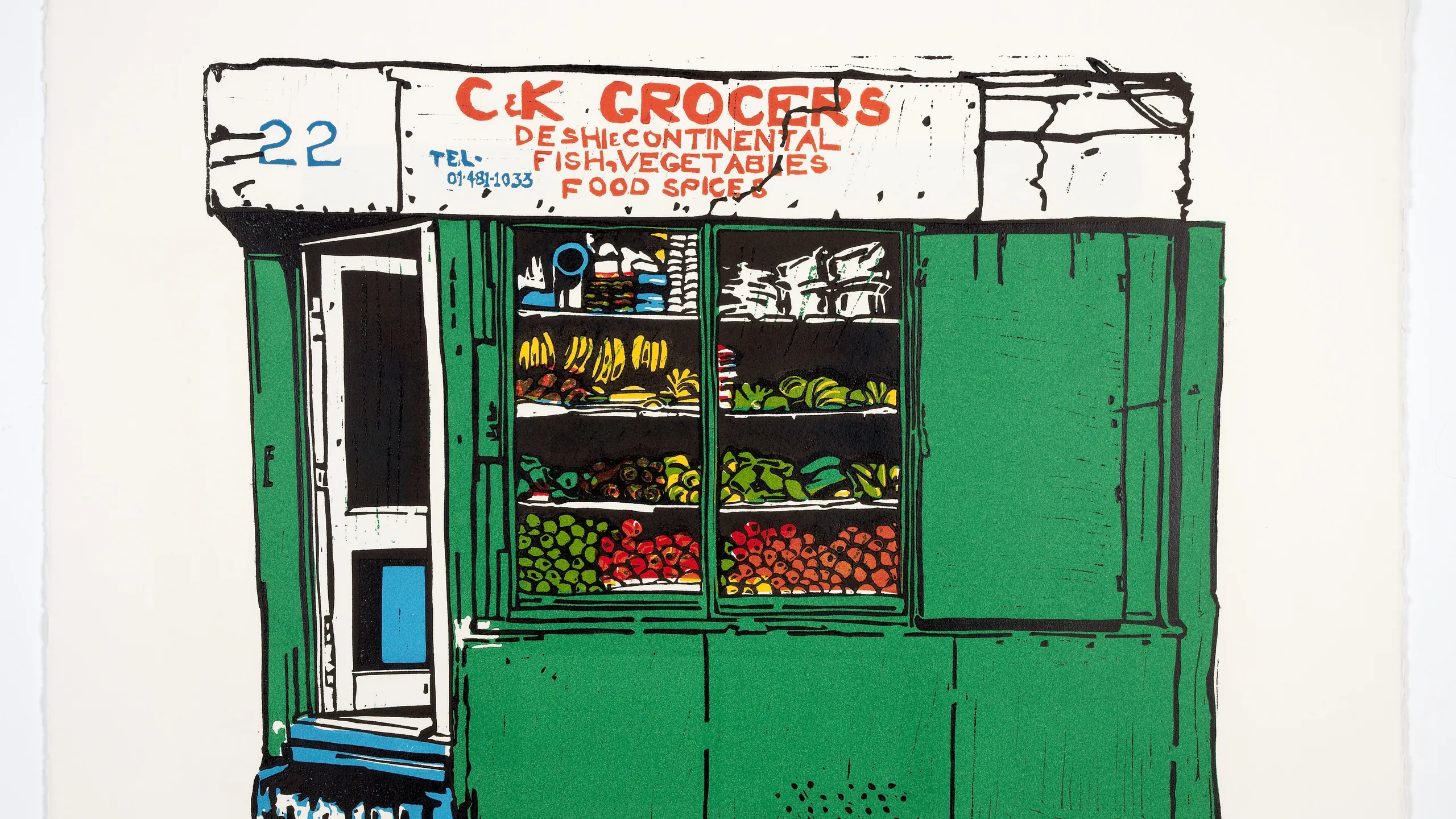
What are linocut prints?
Linocut prints are made by carving a design into linoleum, a firm but pliable material first created as flooring. You then apply ink to the raised areas and transfer the image by pressing it onto a sheet of paper. Artists began to use lino for printing in the early 1900s because it was easier to carve than wood.
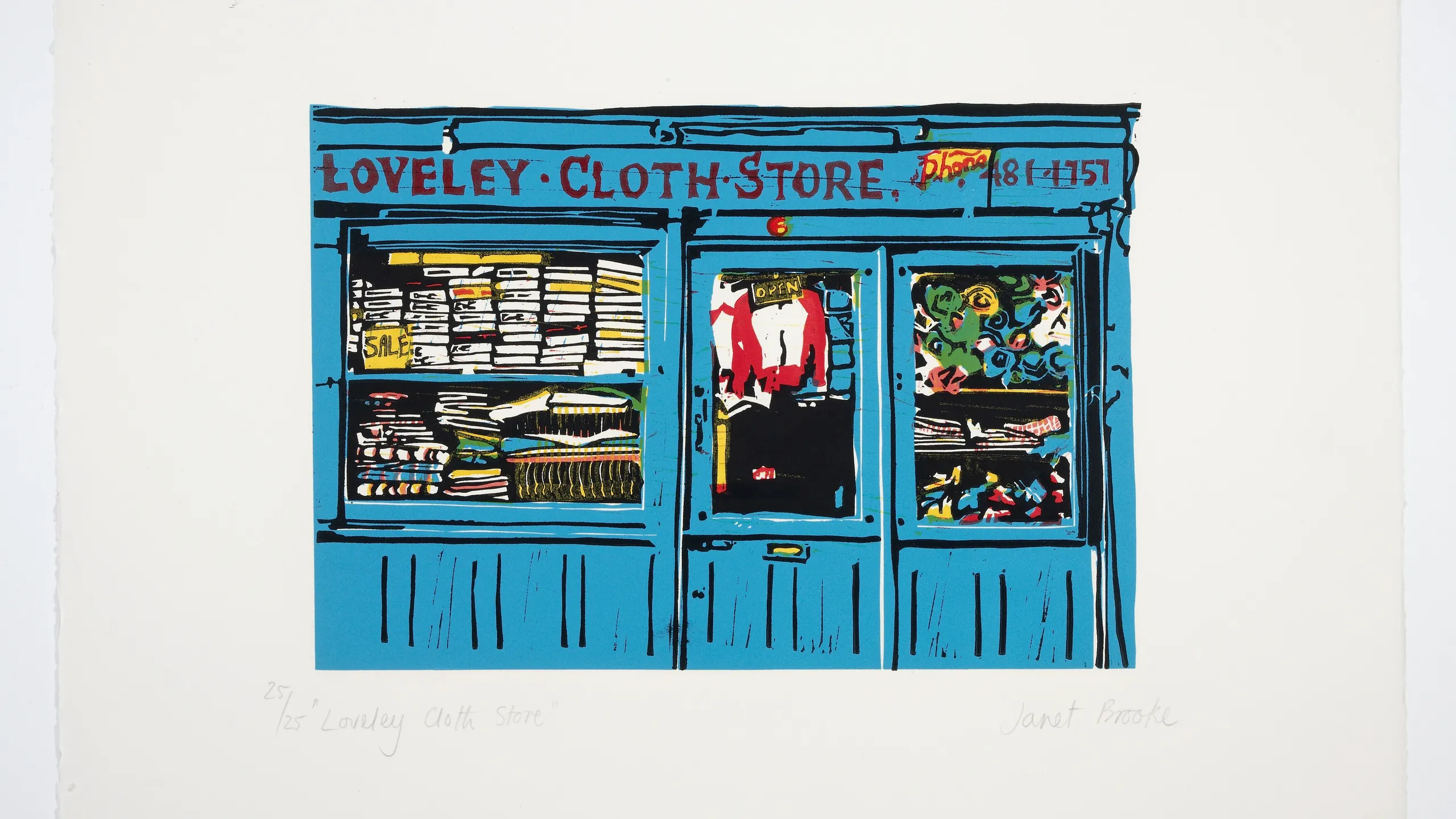
Loveley Cloth Store
Brooke captured the many trades that were disappearing from her local area. In this print, you can see the stacks of books and bolts of cloth crammed into the Loveley Cloth Store shop window.
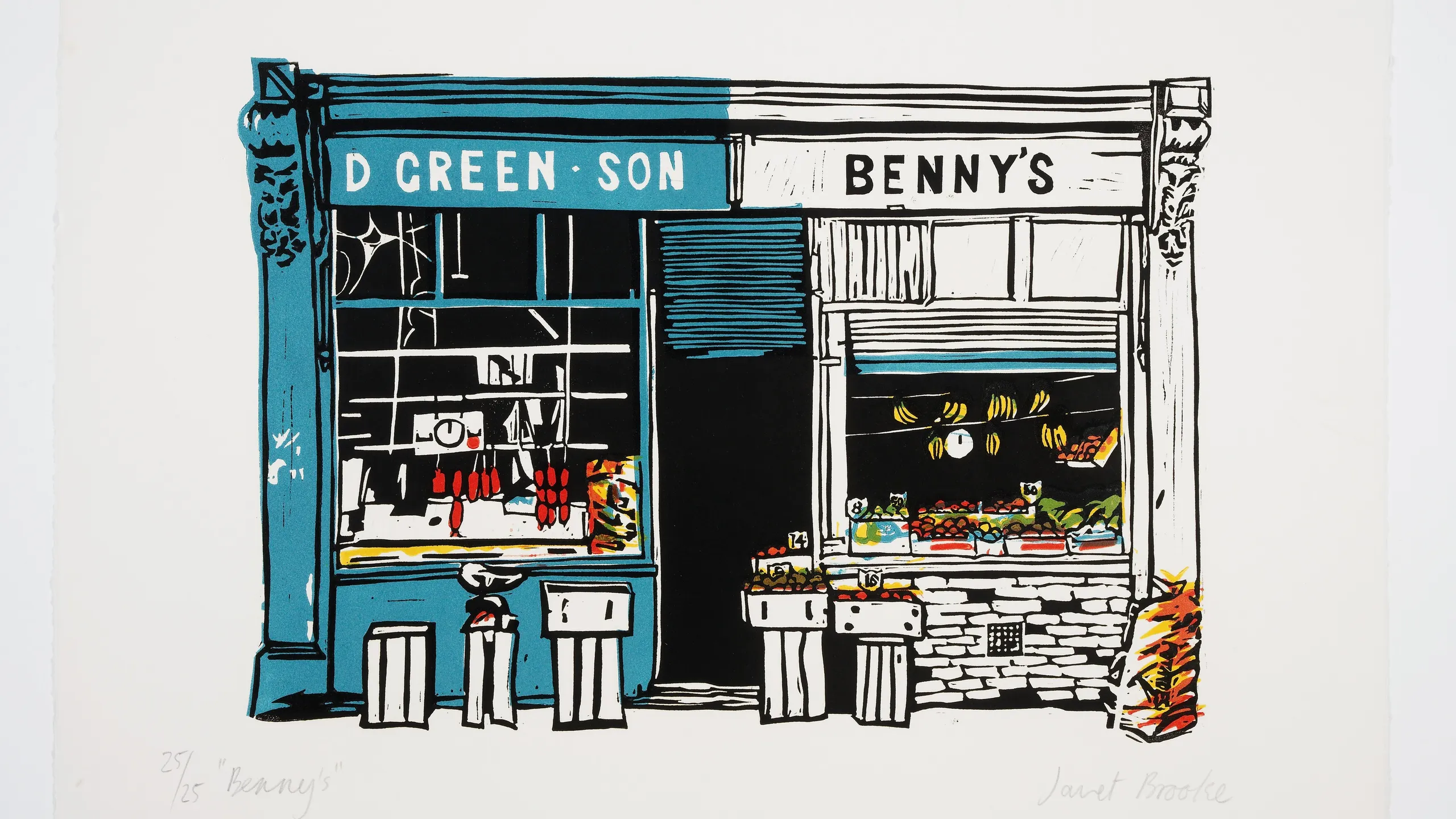
Benny’s
Brooke shows two Mile End shops in this print: a delicatessen called D Green & Sons and a greengrocer called Benny’s. In an article on London blog Spitalfields Life, Brooke recalled that Benny’s was “more a hole in the wall than a shop but I bought all my fruit and vegetables there”.
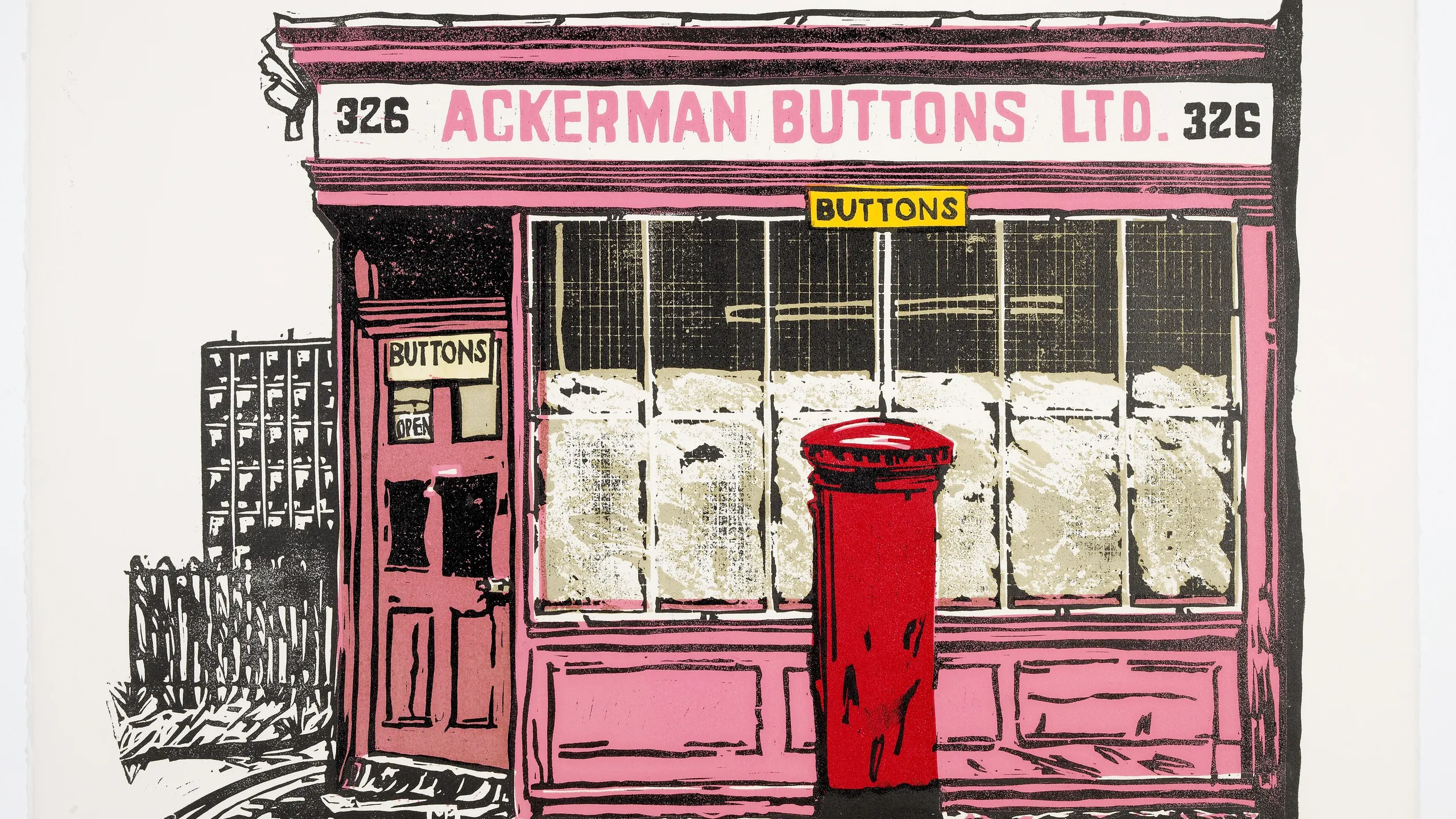
Ackerman Buttons
Ackerman Buttons was a shop on Hackney Road, which connects Shoreditch in Hackney with Cambridge Heath in Tower Hamlets. There’s no inviting shop display here. Inside, Brooke described finding a basic shop with “just stacks of cardboard boxes of buttons and a one bar electric fire”.
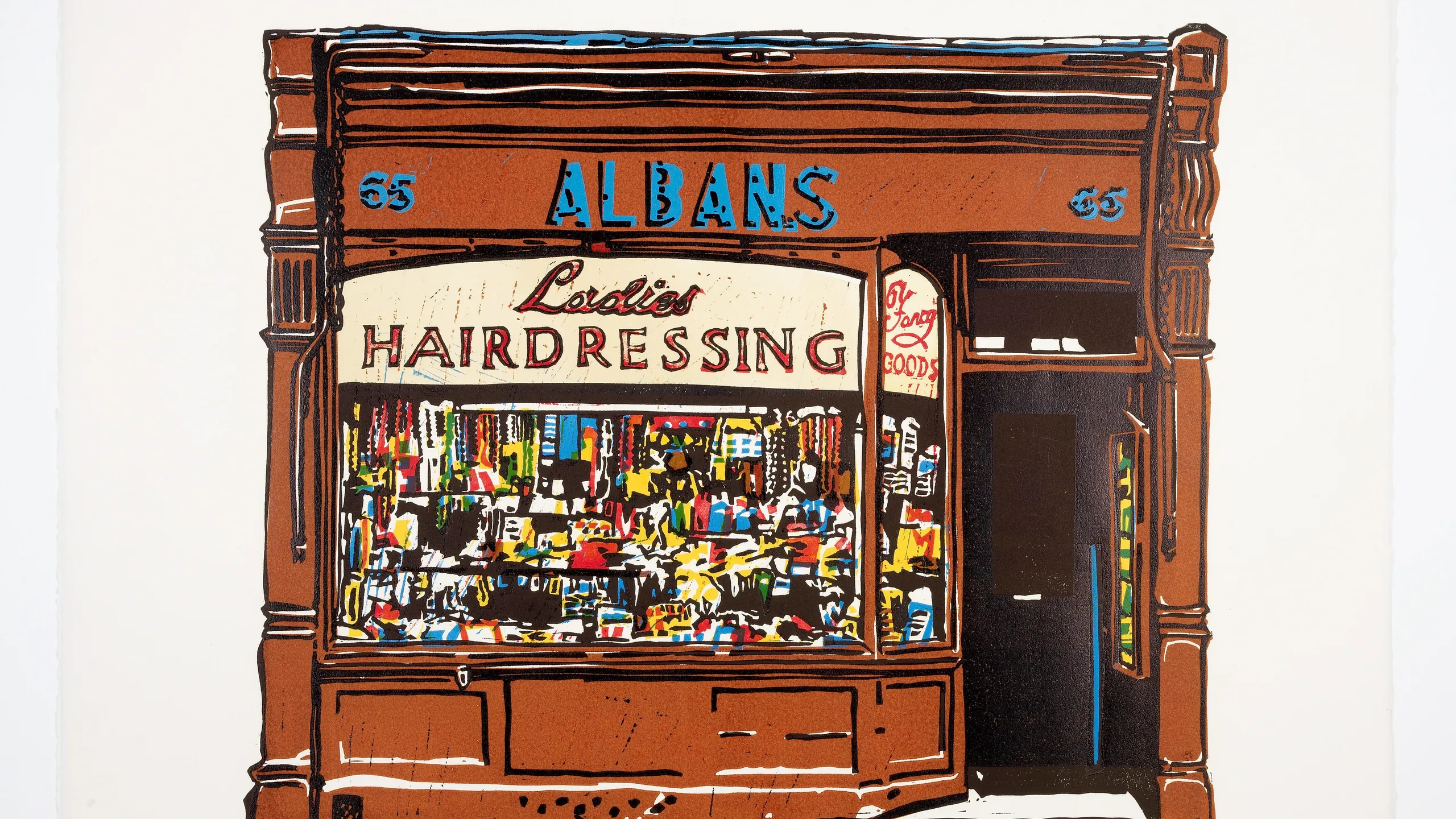
Albans Ladies Hairdressing
Brooke has packed plenty of colour into the window of this hairdressing supplies shop on Roman Road, in Tower Hamlets.
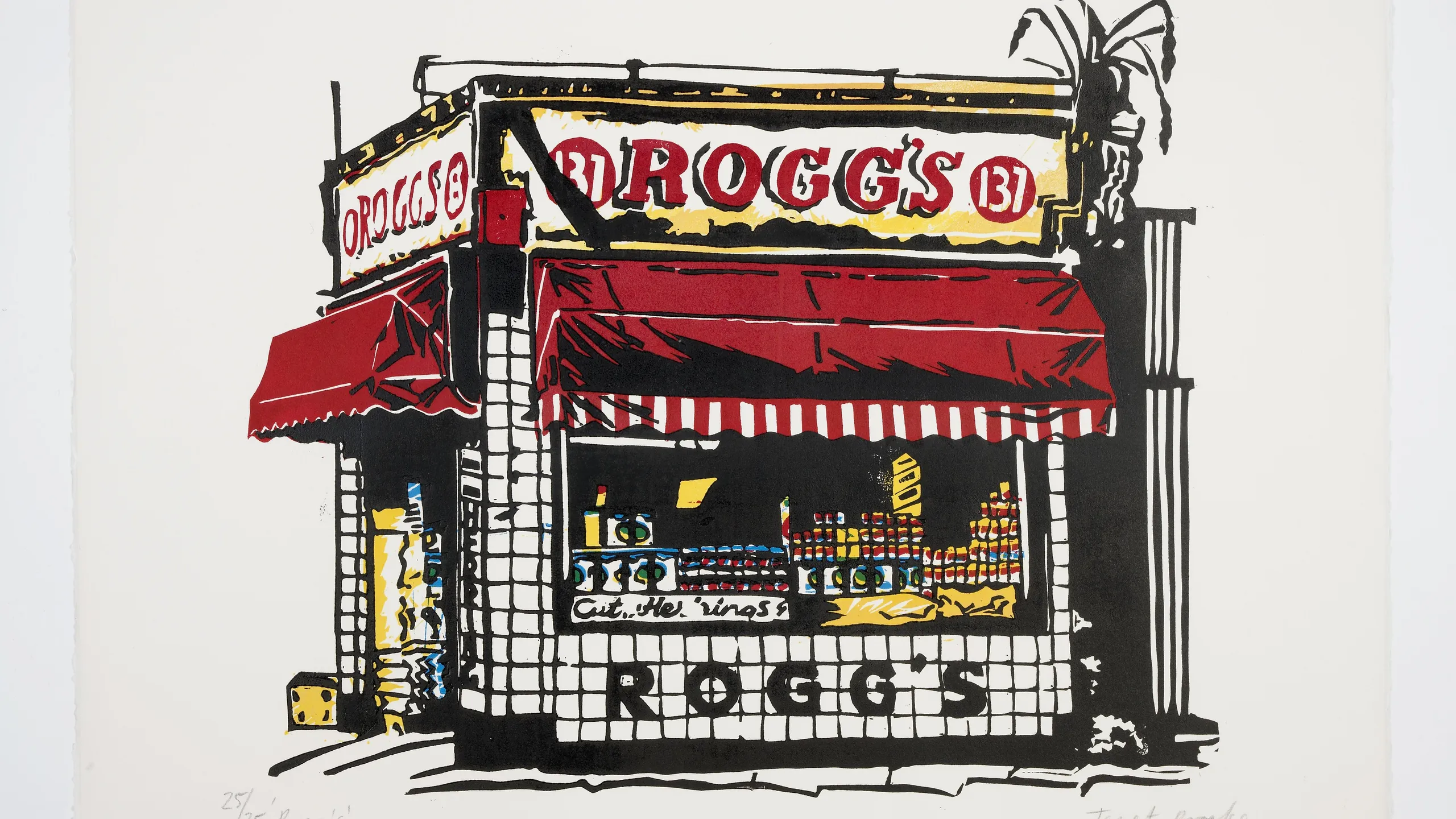
Rogg’s deli
Rogg’s was one of the last surviving Jewish delis in the East End. It stood on the junction of Cannon Street Road and Burslem Street in Whitechapel. From the late 1800s, the area was home to thousands of Jewish families. The store sold many delights, such as fried or brined fish, salt beef and arrays of pickled goods, like cucumbers and chillies.
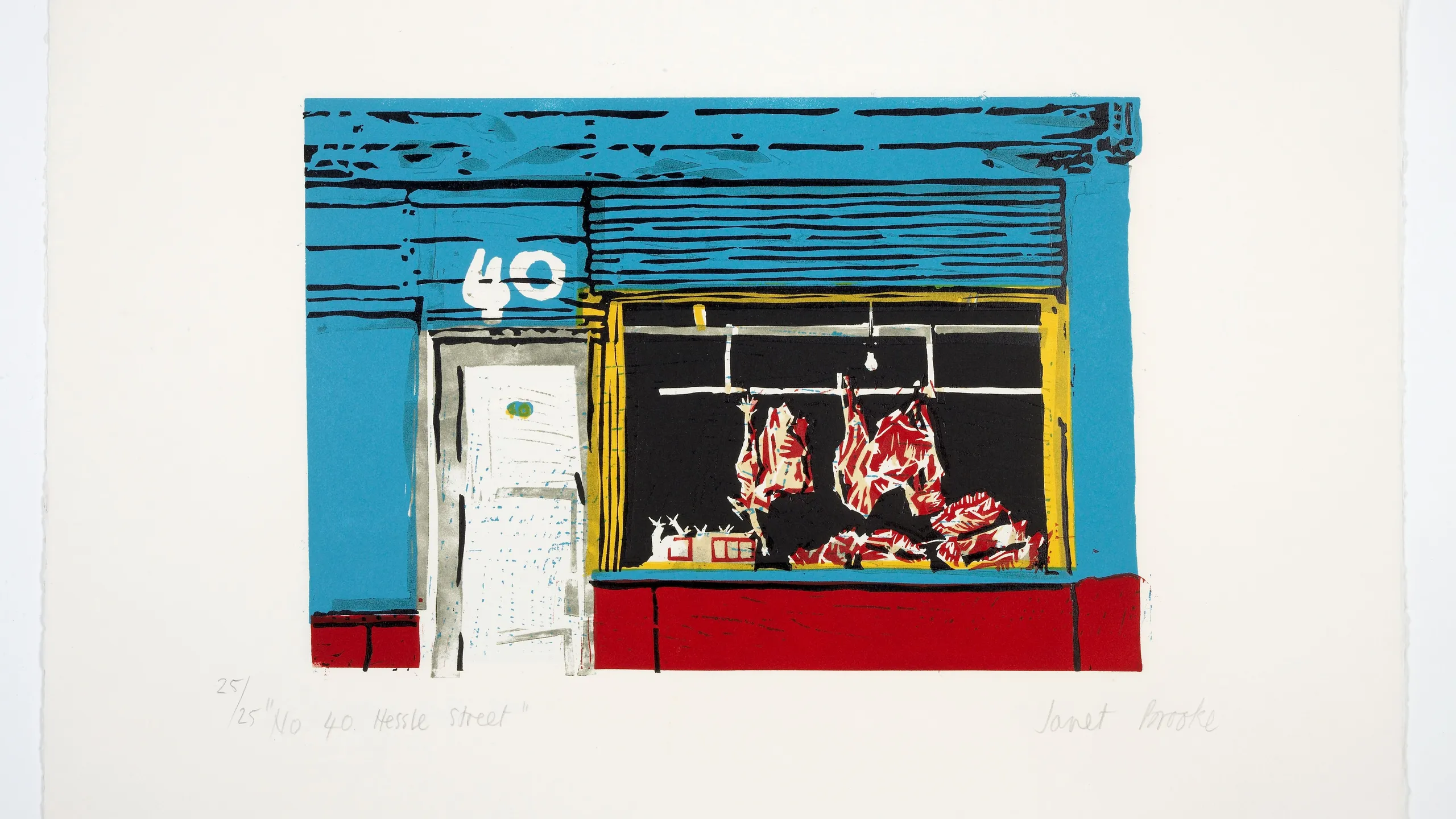
No 40 Hessle Street
This store has no name – but the hanging carcasses in the window give us a clue as to what it sold. Hessle Street was once at the heart of the Jewish East End, but by the time Brooke was making these prints, it had become a thriving area for Bangladeshi businesses. Brooke noted how it had “lots of colourful shops that were very suitable for linocuts”.
